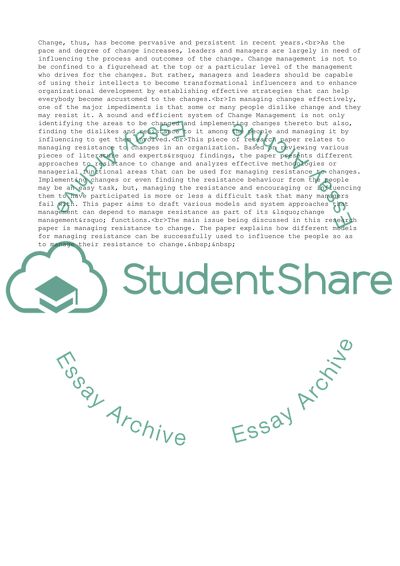Cite this document
(Change Management - Managing Resistance to Change Research Paper, n.d.)
Change Management - Managing Resistance to Change Research Paper. Retrieved from https://studentshare.org/management/1743728-managing-organizational-change
Change Management - Managing Resistance to Change Research Paper. Retrieved from https://studentshare.org/management/1743728-managing-organizational-change
(Change Management - Managing Resistance to Change Research Paper)
Change Management - Managing Resistance to Change Research Paper. https://studentshare.org/management/1743728-managing-organizational-change.
Change Management - Managing Resistance to Change Research Paper. https://studentshare.org/management/1743728-managing-organizational-change.
“Change Management - Managing Resistance to Change Research Paper”, n.d. https://studentshare.org/management/1743728-managing-organizational-change.


